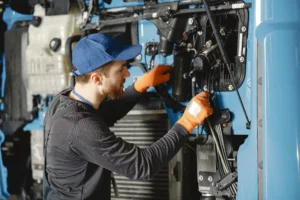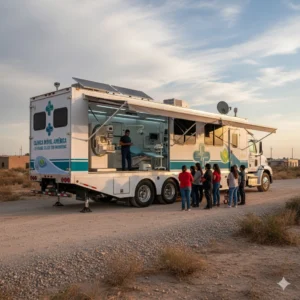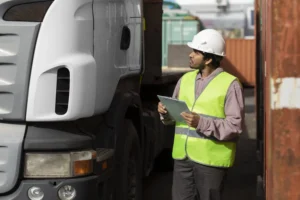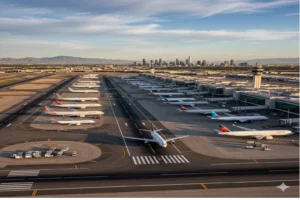The American Transportation Research Institute has released its 14th annual list of the most congested highways and truck bottlenecks in the United States.
The American Transportation Research Institute has released its 14th annual list of the most congested highways and truck bottlenecks in the United States. Some highways from the 2024 list remain, while others have entered the top 10. However, the intersection of Interstate 95 and State Route 4 in Fort Lee, New Jersey, once again stands out, as it has been ranked the most congested bottleneck for freight transportation in the country.
The ATRI analysis, based on 2024 data, evaluated congestion across the national road network using GPS information from freight trucks. The findings revealed that traffic conditions continue to worsen compared to previous years, in some cases due to work zones resulting from increased infrastructure investment.
These delays represent a significant waste of time and fuel. ATRI estimated that, on average, trucks consume 6.4 billion gallons of diesel and generate more than 65 million additional metric tons of carbon emissions while stuck in traffic jams.

The 10 worst bottlenecks in the U.S.
The intersection of I-95 and SR 4 near the George Washington Bridge in Fort Lee, New Jersey, for the seventh consecutive year takes the top spot as the nation’s largest freight bottleneck. The rest of the top 10 bottlenecks are:
- New Jersey: I-95 and SR 4
- Chicago: I-294 at I-290/I-88
- Houston: I-45 at I-69/US 59
- Atlanta: I-285 at I-85 (North)
- Nashville: I-24/I-40 at I-440 (East)
- Atlanta: I-75 at I-285 (North)
- Los Angeles: SR 60 at SR 57
- Cincinnati: I-71 at I-75
- Houston: I-10 at I-45
- Atlanta: I-20 at I-285 (West)
The ATRI report found that the average truck speed during traffic hours was 34.2 MPH, a 3% decrease from the previous year’s speed.

Findings from the ATRI study
The ATRI analysis aims not only to highlight areas with the highest traffic but also to provide a measurement of road transportation performance, to identify where investments should be made. “The information provided through this research facilitates decision-making in both the public and private sectors, helping stakeholders better understand how congestion and delays limit mobility in the U.S. road transportation system,” stated ATRI in its report.
The ATRI’s annual bottleneck list offers a roadmap to reduce supply chain obstacles and guide investments as Congress prepares the reauthorization of transportation programs. The Institute emphasizes that this analysis plays a crucial role in helping local, state, and federal governments allocate funds efficiently.

World Mental Health Day: how to care for truck drivers’ mental health
As part of World Mental Health Day, we focus on caring for the mental health of truck drivers. World Mental Health Day reminds us that

Solving the shortage of diesel technicians
The role of the transport industry in combating the shortage of diesel technicians: what should be done to solve it? In August 2025, the American

Mobile Clinics: The Unsung Heroes Bringing Healthcare to America’s Highways
The drivers of these massive trailers have become the unsung heroes of America’s roads, delivering life-saving medical services to every corner of the country.

Ending CDL reciprocity: the U.S. seeks stricter measures
New bill would require states to comply with the strict CDL regulations recently established. The U.S. House of Representatives has introduced new legislation aimed at

Cargo theft costs the transportation industry $18 million in losses
Cargo theft has been one of the most persistent issues facing the freight transportation industry so far in 2025. Cargo theft has been one of

Duffy Secures $41 Million to Save Essential Air Service as Shutdown Threat Looms
U.S. Transportation Secretary Sean P. Duffy announced on Wednesday that the Department of Transportation (DOT) has secured $41 million in additional emergency funding to sustain the Essential Air Service (EAS) program, a federal initiative that subsidizes commercial flights to rural and underserved communities across the United States.
